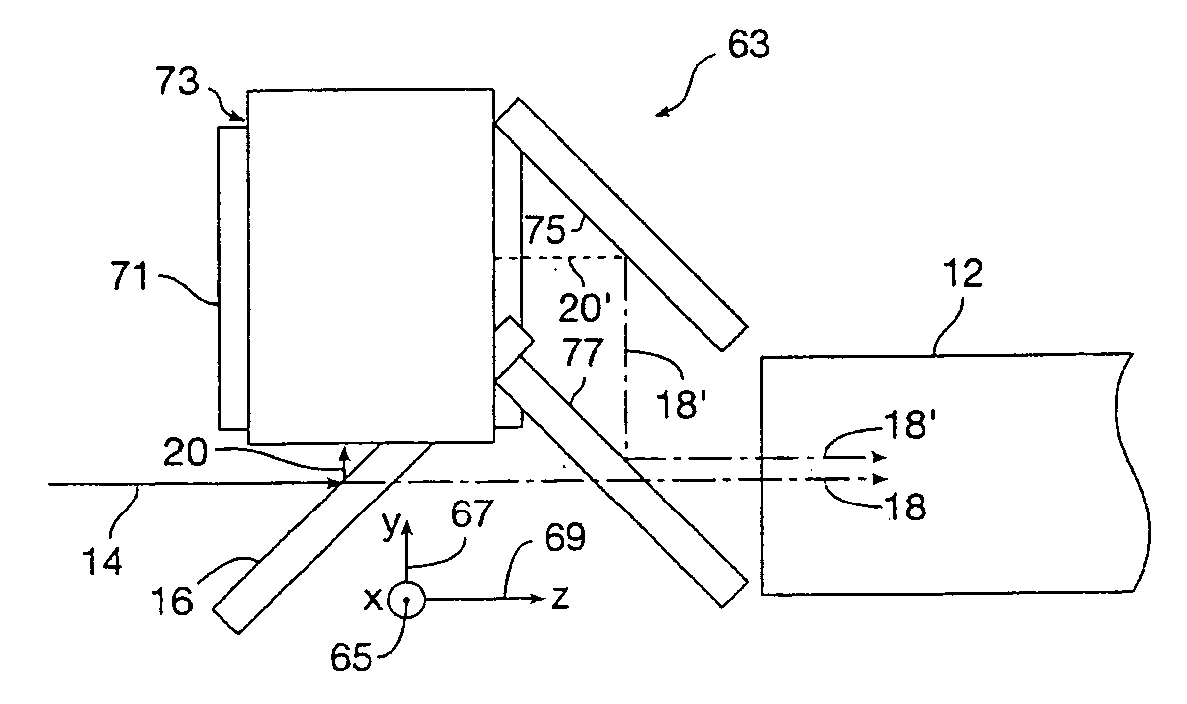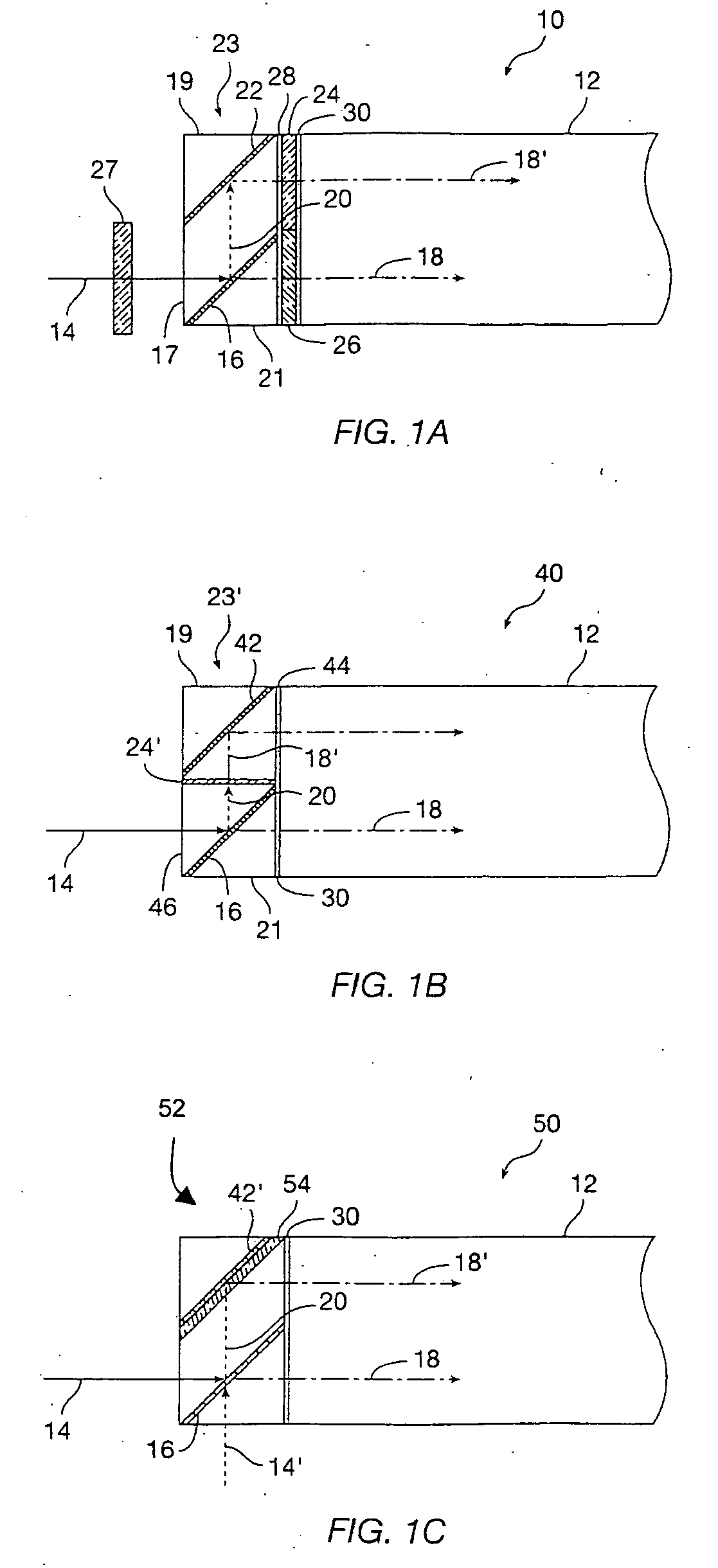Polarization conversion light integrator
a polarization conversion and integrator technology, applied in the field of display systems, can solve the problems of increasing the component count and cost of the polarization recovery system, reducing the brightness of the screen from the center, and reducing the acceptance angle of the screen
- Summary
- Abstract
- Description
- Claims
- Application Information
AI Technical Summary
Benefits of technology
Problems solved by technology
Method used
Image
Examples
Embodiment Construction
I. Introduction
[0028] Embodiments of the present invention provide polarization conversion systems for use in display systems and other applications. In some embodiments, light is directly coupled from a lamp system (arc and reflector) into the PCS without an input light pipe. A polarizing beam splitter with a wide acceptance angle provides efficient conversion and uniform contrast. The polarized light is provided to an output light integrator. In other embodiments, an input light pipe is used to illuminate the polarizing beam splitter with light having a small numerical aperture. High-temperature bonds in the optical path allow the PCS to work in systems having high flux and / or high operating temperatures.
[0029] Generally speaking, polarization recycling systems are particularly desirable for use with lamps having a small arc gap (≦1 mm) and larger panels (greater than about 20 mm), whereas PCSs might be preferable for use with lamps having larger arc gaps and with smaller panels....
PUM
 Login to View More
Login to View More Abstract
Description
Claims
Application Information
 Login to View More
Login to View More - R&D
- Intellectual Property
- Life Sciences
- Materials
- Tech Scout
- Unparalleled Data Quality
- Higher Quality Content
- 60% Fewer Hallucinations
Browse by: Latest US Patents, China's latest patents, Technical Efficacy Thesaurus, Application Domain, Technology Topic, Popular Technical Reports.
© 2025 PatSnap. All rights reserved.Legal|Privacy policy|Modern Slavery Act Transparency Statement|Sitemap|About US| Contact US: help@patsnap.com



